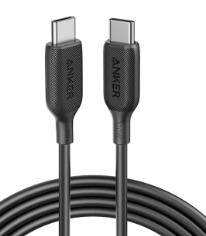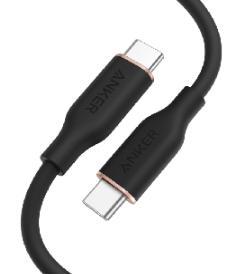Dongles and Adapters: Navigating the Transition to USB-C
by Miles Warren
October 20,2023
As technology marches forward, so does the evolution of connectivity standards. In recent years, we've witnessed the rise of USB-C, a versatile and powerful interface that offers high-speed data transfer, fast charging, and a universal connection solution. However, this transition has brought about a need for dongles and adapters to bridge the gap between older devices and the new USB-C standard. In this article, we'll explore the world of dongles and adapters, and how they help users navigate the transition to USB-C.
The Forms of Dongles and Adapters
Dongles and adapters act as intermediaries, allowing devices with different ports to connect and communicate. They come in various forms and serve specific functions, making them crucial accessories in the transition to USB-C.

1. USB-A to USB-C Adapters
One of the most common types of dongles is the USB-A to USB-C adapter. This small, often pocket-sized device converts a standard USB-A port into a USB-C port. It enables users to connect their older USB-A devices, such as external hard drives, keyboards, and mice, to USB-C-equipped laptops and smartphones.
2. HDMI to USB-C Adapters
As many older monitors and projectors still use HDMI ports, HDMI to USB-C adapters have become essential for users looking to connect their USB-C devices to these displays. These adapters ensure seamless video and audio transmission, allowing users to extend their displays or mirror their screens.
3. USB-C to Ethernet Adapters
For users who require a wired internet connection, USB-C to Ethernet adapters are invaluable. These adapters allow devices without an Ethernet port to connect to a wired network, providing a more stable and reliable internet connection, which can be crucial for activities like online gaming or video conferencing.
4. Multiport Hubs
Multiport hubs are versatile adapters that offer a range of ports in a single device. They typically include USB-A, HDMI, SD card readers, and sometimes even additional USB-C ports. These hubs are particularly popular for users who want to expand their device's connectivity options, turning a single USB-C port into a hub of various ports.
5. USB-C to 3.5mm Audio Jack Adapters
As some devices, particularly smartphones, transition away from the traditional 3.5mm headphone jack, users may need a USB-C to 3.5mm audio jack adapter to continue using their wired headphones or external microphones.
Choosing the Right Dongle or Adapter
When selecting a dongle or adapter, it's crucial to consider factors such as compatibility, build quality, and specific use cases. Here are some tips to help you navigate this process:

1. Verify Compatibility
Ensure that the dongle or adapter you choose is compatible with both your USB-C device and the peripheral you intend to connect. This includes checking for compatibility with specific versions of USB, such as USB 3.0 or USB 3.1.
2. Check for Pass-Through Charging
Some dongles and adapters come with pass-through charging capabilities, allowing you to charge your device while using other ports on the adapter. This can be especially useful for laptops or tablets with limited USB-C ports.
3. Consider Quality
Look for adapters made from durable materials that can withstand daily use. High-quality connectors and reinforced cables can help ensure a reliable and long-lasting connection.
4. Read Reviews and Seek Recommendations
Before making a purchase, take the time to read reviews and seek recommendations from other users. This can provide valuable insights into the performance, durability, and compatibility of the dongle or adapter.
5. Anticipate Future Needs
Consider whether the dongle or adapter meets your potential future needs. Investing in a versatile adapter that supports multiple ports and functions can save you from needing to purchase additional adapters down the line.
Conclusion
In conclusion, dongles and adapters play a crucial role in helping users transition to the usb-c standard. By understanding the different types of adapters and considering factors like compatibility and build quality, users can make informed choices that enhance their connectivity experience. With the right dongle or adapter, users can bridge the gap between legacy ports and the exciting world of USB-C, ensuring their devices remain versatile and connected in the evolving landscape of technology.
